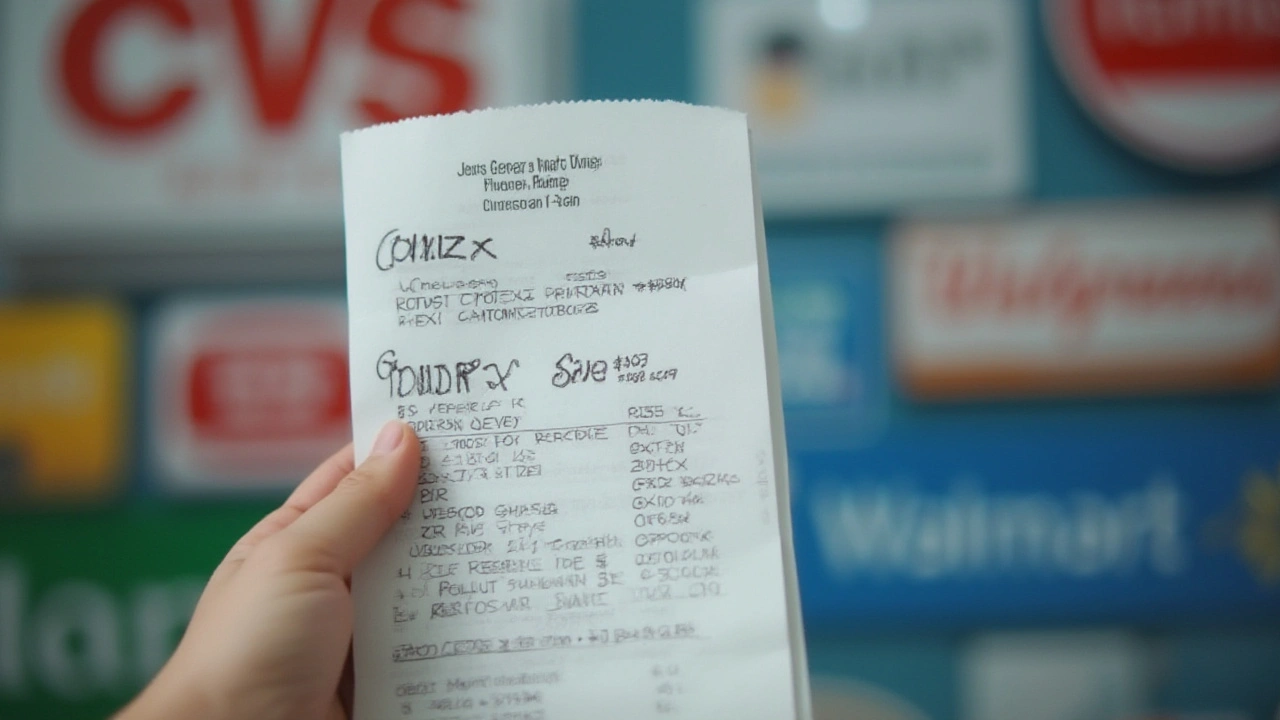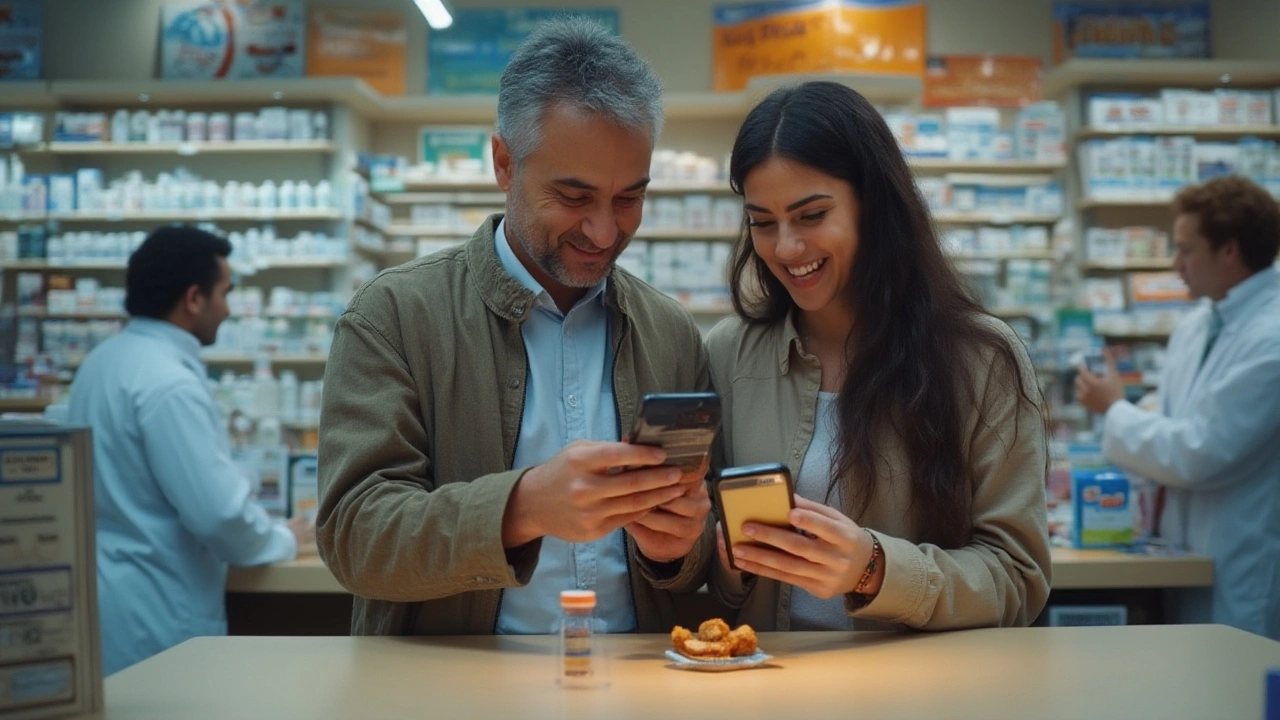It’s not just you—prescription drug prices in America keep playing hopscotch. One refill costs $20, another time it’s $110. Next thing you know, your pal recommends a coupon app that claims to cut that number in half. But does it really hold up in 2025, or is it just marketing fluff? If you’ve ever stared at a pharmacy receipt with disbelief, you’re not alone. Today, we’re putting two big coupon contenders, BuzzRx and GoodRx, face to face. Get ready for some eyebrow-raising price data and up-to-date tips to stretch your dollar.
How Do BuzzRx and GoodRx Actually Work in 2025?
BuzzRx and GoodRx promise you’ll never pay full price again on generic prescriptions, but the magic behind them isn’t really magic: it’s data hustle and pharmacy negotiations. These aren’t insurance plans. You won’t find any copays or deductibles here. Instead, both programs use huge databases that track and aggregate prescription prices at thousands of major chains—think CVS, Walgreens, Walmart, Kroger, Rite Aid, Costco—you get the idea. When you search your drug, they spit out coupons or digital codes you show at the counter. Sometimes they even beat your insurance card price, and they work whether you’re insured or not.
So what’s the big deal in 2025? Both platforms have stepped up their user experience. BuzzRx has made noise thanks to its charity donation program—every prescription you fill with their coupon gives a little chunk to a national or local nonprofit (over $10 million donated so far). GoodRx, meanwhile, has improved its subscription-based Gold tier, wrapping up deeper discounts for hardcore users for $9.99/month. Both let you browse anonymously, but if you make an account, you unlock extras—reminder notifications, favorites lists, and sometimes layered discounts.
Both sites claim hundreds of millions in consumer savings each year, but things get tricky when you’re staring at the price tag for your own meds. The price swing can be wild. Last month, a survey by Civic Health reported that the same 30-tab prescription swung from $8 to $62 depending on the coupon and the store—sometimes even at locations literally across the street. No wonder shoppers get skeptical.
Real-World Price Comparisons: BuzzRx vs GoodRx on Top Generics
You want numbers, so I hunted them down. In late June 2025, I pulled prices for ten of the most commonly filled generic prescription drugs at five of the biggest pharmacy chains in the country—CVS, Walgreens, Walmart, Rite Aid, and Kroger. To keep things level, I ran each test as a first-time, non-subscribed user in a medium-large city. Here are some fresh, side-by-side results so you can see which coupon actually stacks up:
| Generic Drug (Dose) | CVS BuzzRx | CVS GoodRx | Walgreens BuzzRx | Walgreens GoodRx | Walmart BuzzRx | Walmart GoodRx |
|---|---|---|---|---|---|---|
| Atorvastatin 20mg (30 ct) | $13 | $11 | $17 | $12 | $9 | $9 |
| Lisinopril 10mg (30 ct) | $8 | $7 | $10 | $9 | $5 | $5 |
| Simvastatin 40mg (30 ct) | $14 | $13 | $15 | $12 | $9 | $8 |
| Sertraline 50mg (30 ct) | $11 | $10 | $18 | $14 | $8 | $8 |
| Metformin 500mg (60 ct) | $7 | $6 | $9 | $7 | $4 | $4 |
| Amlodipine 5mg (30 ct) | $9 | $8 | $11 | $9 | $4 | $5 |
| Omeprazole 20mg (30 ct) | $12 | $10 | $19 | $12 | $8 | $8 |
| Montelukast 10mg (30 ct) | $17 | $15 | $18 | $14 | $11 | $9 |
| Levothyroxine 50mcg (30 ct) | $12 | $11 | $15 | $13 | $7 | $7 |
| Citalopram 20mg (30 ct) | $13 | $12 | $15 | $13 | $9 | $8 |
Notice a pattern? GoodRx often wins by a dollar or two at CVS and Walgreens, but at Walmart and Kroger, the prices are neck-and-neck. Some of the cheapest fills—like $4 generics at Walmart—can be matched by either coupon on basic blood pressure and diabetes meds. BuzzRx pulls ahead for infrequently filled drugs at smaller chains, while GoodRx makes a difference on more expensive psych meds and cholesterol drugs. Bottom line: there’s no clear universal winner—your savings will pivot on your specific med, store, and sometimes even your city.
Want to drill down further? If you dig into resources like BuzzRx vs GoodRx, you’ll see there’s a handful of wildcards, like in-app flash sales, regional partnerships, and personalized discounts when you opt in with your email. If you’re chasing every cent, you really do have to check both coupons before every fill. And don’t just glance at the search result—flip through details like filling requirements, valid stores, and expiration dates.

Secret Factors That Tweak Coupon Savings: What Most Shoppers Miss
Here’s where things get dicey—coupon prices aren’t as static as they look. Most people just pull up the app, type in their med, and pick the lowest number. But several hidden factors can nudge that price higher or lower at checkout:
- Pharmacy location: Urban stores with heavy foot traffic often have higher coupon prices than their rural cousins.
- Pharmacy-negotiated prices: Prices change month-to-month as chains renegotiate their deals with BuzzRx and GoodRx. That $7 coupon today? It could be $13 in a few weeks for the same prescription, even at the same store.
- Drug supply blips: If a generic is in shortage, prices will spike or coupons may disappear temporarily.
- Cash price vs. coupon price: Occasionally, a pharmacy’s own cash price beats the coupon, especially for $4 list generics.
- Insurance interference: Using a coupon if you have insurance sometimes means your spend won’t count toward your deductible, so watch for this with high-deductible plans.
One little-known hack: some stores, especially independent ones, accept competitor coupons if you show them a lower price—even if it’s not through their official program. Pharmacies want your business, and most chains get a fee per fill when you use these coupons. Always ask the pharmacist to match the coupon you’re showing—worst they can say is no.
And don’t sleep on regional pharmacy discount clubs. H-E-B in Texas, Giant Eagle in Ohio/Pennsylvania, and Publix in Florida often stack their own savings on top of big-coupon prices for loyal customers.
Want another pro tip? Timing matters. Some chains drop prices on first fills to lure new customers and quietly hike them for refills. GoodRx Gold and BuzzRx Plus try to lock in rates even for refills—something standard one-off coupons don’t always offer. If you’re on a chronic medication, do the math with bulk fills (60- or 90-day supplies) since discounts often grow with bigger orders.
Which Coupon Should You Trust for Your Next Prescription?
No single app can promise a “best price” every time. That’s the frustrating truth in 2025. Your ideal strategy is to keep both BuzzRx and GoodRx queued up on your phone. Treat them like dueling gas price apps—compare every time before you refill. The only real downside to coupon hopping is the minor hassle of switching codes at checkout. Pharmacists are used to it by now and usually don’t bat an eye.
Prescription coupons now account for almost one in five U.S. retail fills, according to a late 2024 Pharmacy Board survey. And the competition is getting fiercer each month. BuzzRx’s charitable angle is a feel-good perk if you care who benefits from your choice, while GoodRx’s wider acceptance and subscription tier can pay off if your doctor keeps you on several meds at once.
Don’t forget smaller players like SingleCare and WellRx. Every so often, they’ll undercut both main rivals, especially outside the top 25 meds. If you keep a quick spreadsheet or save your searches, it only takes a few seconds to check all the major options every month.
Bottom line? Treat coupon prices like airline seats. They bounce up and down, and there’s nothing wrong with hunting for the better deal every month. Don’t get stuck in a rut, and don’t assume one app will always save you the most. Big savings are still out there—just not always where you expect them the first time you search.
Pharmacies make the system complicated, but you don’t have to be the one footing the extra bill. With a bit of stubbornness, some curiosity, and both BuzzRx and GoodRx in your digital toolkit, your wallet—and maybe even a charity—will thank you.

7 Comments
Jim Daly
bro i used goodrx for my zoloft and it was $18 then buzzrx said $12 so i went with that... then at checkout they said 'sorry coupon invalid' like wtf is this america??
Tionne Myles-Smith
I just want to say THANK YOU for this post!! 🥹 I’ve been using both apps for my mom’s meds and honestly, it’s saved us over $400 this year. I didn’t even know about the Walmart $4 generics-now I check both apps every single time. You’re literally helping people survive out here.
Leigh Guerra-Paz
Oh my gosh, yes!! I’ve been doing this for years and I’m so glad someone finally broke it down clearly! 🙌 I always check both BuzzRx and GoodRx, and I also ask the pharmacist if they’ll match a competitor’s price-it works like 70% of the time! And don’t forget to check your local H-E-B or Publix coupons too! They sometimes stack on top! Also, if you’re on a 90-day supply, it’s almost always cheaper-just ask for it! You’re not being weird, you’re being smart!! 💪💖
Jordyn Holland
Wow. So you spent 1500 words to tell people to use two apps that exist for free? How revolutionary. The real problem is that pharmaceutical companies are monopolistic cartels and you’re all out here haggling like it’s a flea market. But hey, at least you feel virtuous donating pennies to charity while the system burns. How noble.
Jasper Arboladura
The data presented is statistically insignificant. You sampled five chains in one medium-sized city. The sample size is too small to draw any meaningful conclusion about national pricing trends. Furthermore, the table lacks standard deviations and confidence intervals. Without proper statistical rigor, this is anecdotal noise masquerading as analysis.
Joanne Beriña
GoodRx is just a tool of the globalist elites. BuzzRx donates to charities? That’s just woke laundering. Real Americans don’t need coupons-we need to ban foreign drug manufacturing and bring production home. This whole system is rigged by China and Big Pharma. If you’re not mad, you’re not paying attention.
ABHISHEK NAHARIA
In India, we have no such apps. We simply go to local chemists and negotiate. The system here is transparent because there is no corporate middleman. Your reliance on digital coupons reflects a deeper cultural dependency on technology to solve structural failures. Perhaps your society has become too comfortable with convenience to demand systemic change.